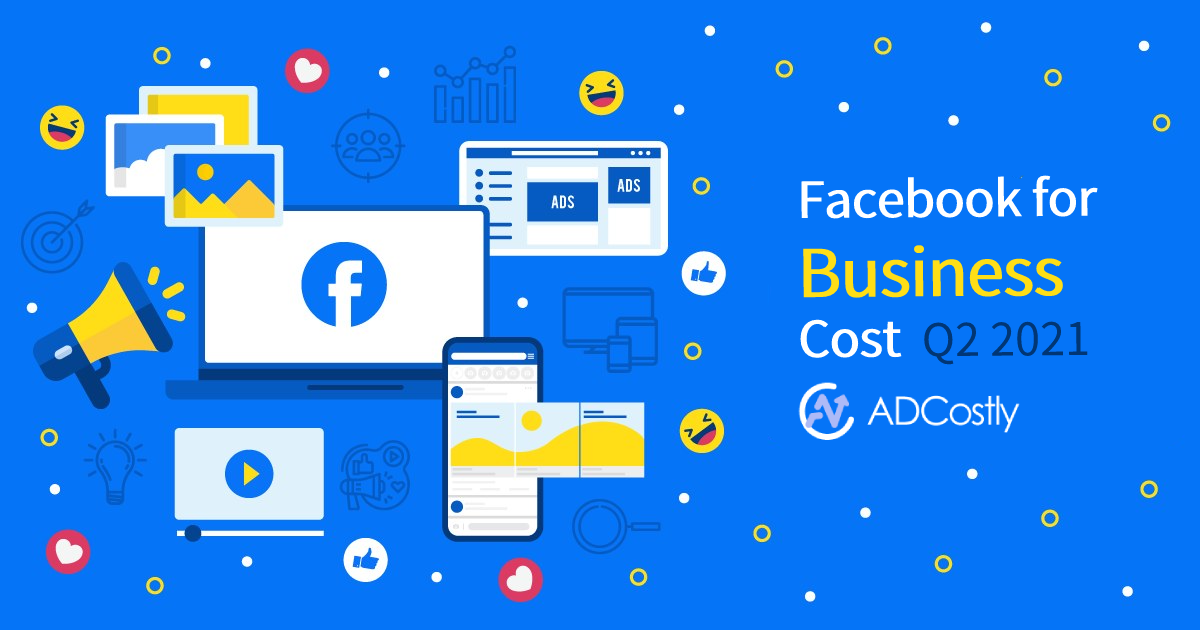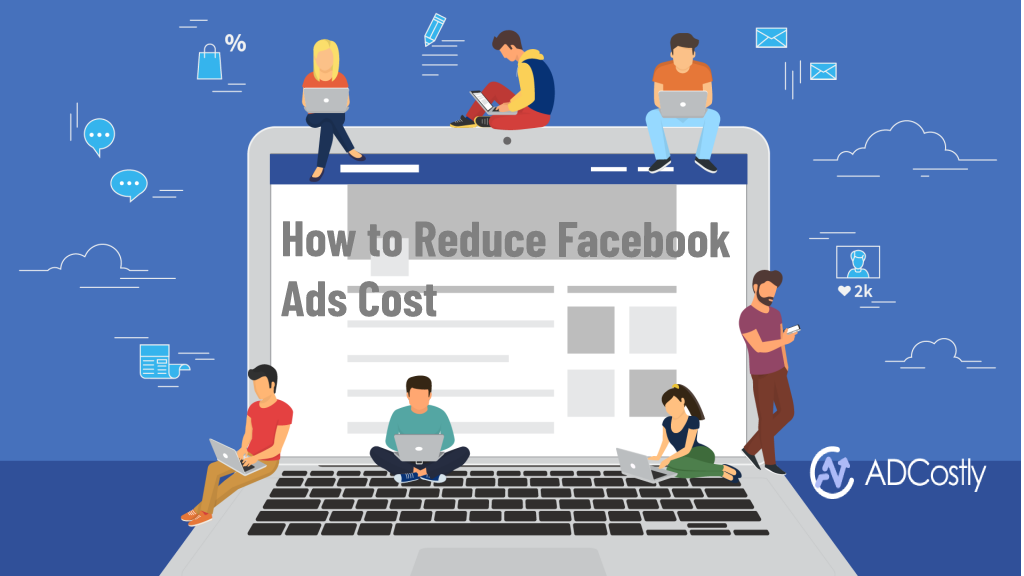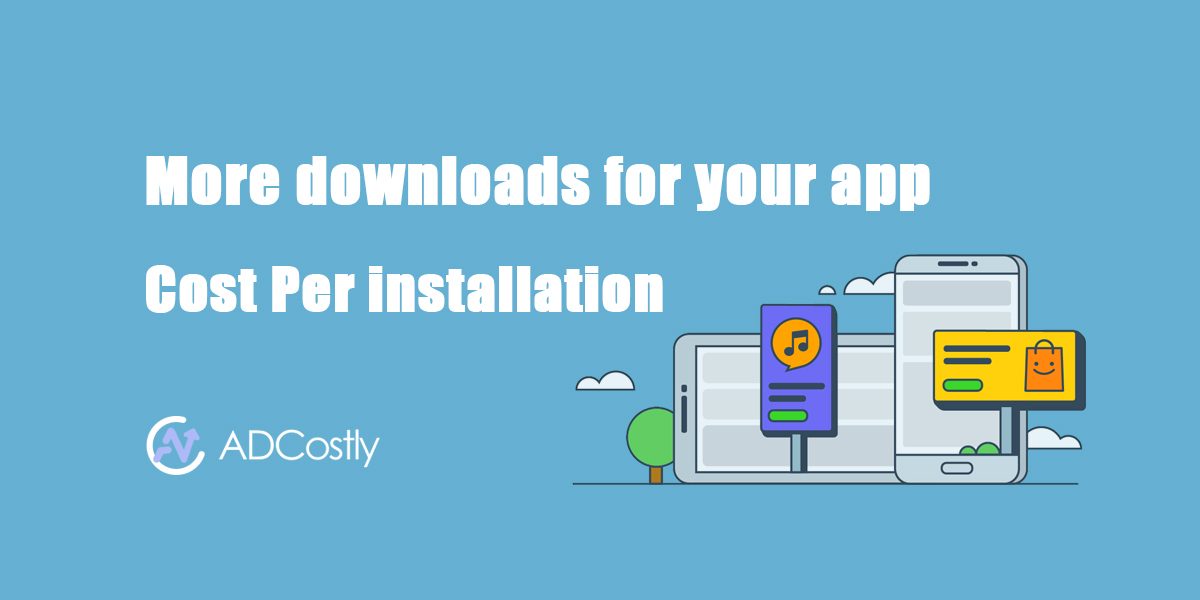Don’t Ignore Facebook Cost Per Action Advertising in 2021|ADCostly
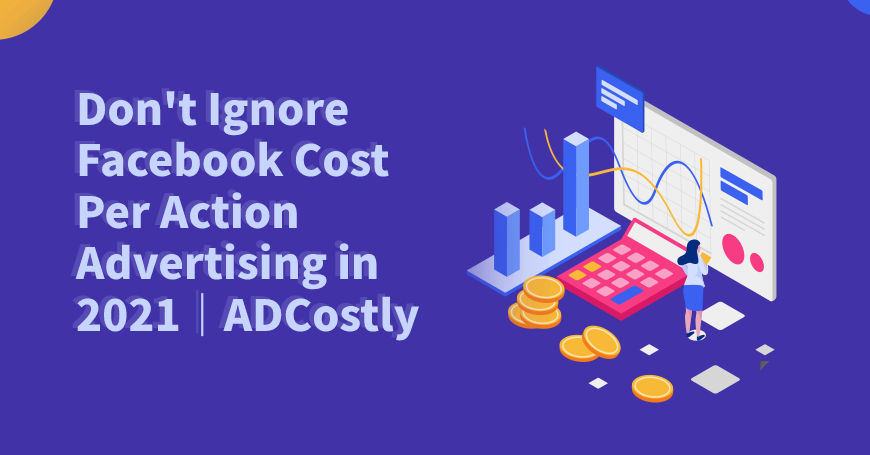
There are many forms of mobile advertising, but not all forms are beneficial to advertisers. The price of traditional advertising models is getting higher and higher, but the effect is gradually getting worse. Promoters need to start exploring new strategies to bring better advertising effects. The use of CPA advertising can enable advertisers to achieve ROI targets while minimizing their risks.
What is CPA advertising?
CPA is the abbreviation of Cost Per Action, and sometimes also refers to the cost of user acquisition (Cost Per Acquisition). In CPA advertising, the advertiser only pays when the user-guided by the advertisement takes a certain action. Advertisers can flexibly choose the conversion points they need, such as first purchase, subscription registration, or completion of forms. Since CPA directly associates advertising with conversions (rather than impressions or clicks), this model is very beneficial to advertisers.
CPA is calculated by dividing the total advertising spend by the total number of attribution conversions, and the result is the cost you need to pay for each Action. CPA is similar to other forms of performance advertising, such as CPV (cost per view) advertising, CPCV (cost per view) advertising, and CPE (cost per participation) advertising. The risks and/or responsibilities that promoters need to bear are more important.
It is easy to confuse CPA advertising with CPE advertising. This confusion arises partly because different traffic providers have different definitions of "E" and "A". Both terms refer to user activity that occurs due to in-app advertising activities.
"E": As part of the App promotion in the advertiser App
"A": Occurs outside the App, usually on the mobile web. Although the advertisement itself exists in the in-app environment, the conversion does not occur in the app.
This is crucial because the iOS and Android platforms have different policies for in-app advertising. CPA ads are allowed on both platforms, while CPE ads are limited to Android devices due to in-app conversions. CPA is an ideal choice for performance marketers and advertisers, and CPE is very suitable for app user acquisition.
Advertiser evaluation index
Advertisers have different delivery requirements in terms of brand image establishment and advertising effectiveness. According to different focus directions, we can be divided into effect advertisers and brand advertisers.
The focus of performance advertisers is the direct effect—Performance, which realizes the value conversion of products, such as registration, download, purchase, etc., which are usually measured by short-term returns, representing industries such as games and e-commerce.
Brand advertisers focus on brand promotion-Branding, which achieves brand awareness, reputation, and loyalty, measured by long-term effects, representing traditional industries such as automobiles. Therefore, the evaluation indicators of brand advertisers and performance advertisers will also be different.
We divide advertiser evaluation indicators into three categories: Basic, Performance, and Branding.
Basic Index
CPM: The most scientific way to charge is to charge according to how many people see your advertisement. Charging per visit has become a common practice in mobile advertising platforms. CPM (Cost for One Thousand People) refers to the average advertising cost-shared by everyone who hears or sees an advertisement during the advertising process. Traditional media mostly use this pricing method. On the mobile advertising platform, CPM depends on the "impression" scale, which is usually understood as the number of times a person's eyes look at an advertisement in a fixed period.
CPC: Cost Per Click or Cost Per Click-Through, cost per click, that is, the price corresponding to one click of an advertisement. It is expressed by the formula that CPC=Cost/Click.
CTR: Click Through Rate, refers to the click-through rate of an ad, that is, the percentage of ad clicks to ad impressions. It is expressed by the formula that CTR=(Click/Impression)100%.
Combining CPM and CTR can get CPC=CPM/(CTR*1000). If the advertisement mainly assesses CPC, it will generally start with CPM and CTR. The above are the more commonly used basic assessment indicators, and there are other indicators such as click-through rate (the proportion of users who click on the advertisement and successfully reach the Landing Page).
Performance Index
CPA: Cost Per Action, generally referred to as the cost per registration, that is, the price corresponding to a registered user. For example, the game requires users to register as players through the advertising page. It is expressed by the formula that CPA=Cost/number of registrations.
CPL: Cost Per Lead, the acquisition cost per potential customer, that is, the price corresponding to the information of a potential customer. For example, the automotive industry requires potential customers to fill out the form through the advertisement page to make an appointment for a test drive. It is expressed by the formula that CPL=Cost/Lead quantity.
CVR: Click Value Rate, refers to the click conversion rate of an ad, that is, the percentage of ad conversions to ad clicks. The formula is CVR=(conversion times/Click)*100%, where the conversion times can be the number of registrations, the number of leads, the number of orders, etc.
ROI: Return On Investment, the rate of return on investment, that is, within a certain period, the value that advertisers recover through advertising accounts for the percentage of advertising investment. Generally speaking, ROI will bring a cycle, such as daily ROI, monthly ROI, etc. It is expressed by the formula that ROI=Recovery Value/Cost.
Branding Index
Some brand advertisers require pure advertising display, such as how much advertising volume is required to be placed on which day and which channel, etc. This type of advertising assessment focuses on the volume of advertising. At present, the proportion of such advertisers is gradually declining. Especially in the programmatic advertising market, most brand advertisers have certain requirements for delivery effects, but they cannot be measured by short-term effects like performance advertisers, but from advertising. The delivery environment and delivery audiences are evaluated from the perspectives.
Several unique visitors: The number of Unique Visitors refers to the total number of virtual natural persons (identified by the client) who visit the page within a certain period.
Bounce rate: refers to the ratio of the number of visits that are left after only viewing the entry page (usually the Landing Page) accounted for the total number of visits to the page. It is used to measure the quality of visits to the page after the user clicks on the ad, or to measure the page's Attractiveness to users.
Advertisement visibility: According to the definition of IAB, a display advertisement as long as more than 50% of the pixels are displayed on the screen for more than 1 second, is Viewable Impressions. This standard is generally adapted to PC banner ads. Video ads or mobile advertising standards will be different, and the calculation standards of each advertising platform will also be different. Brand advertisers usually need to consider the Viewability of advertising and limit KPI standards to evaluate the quality of advertising.
The pros and cons of CPA advertising
The CPA pricing method has certain risks for the website, but if the advertising is successful, its revenue will be much larger than the CPM advertising pricing method.
To avoid the risk of advertising costs, advertisers only pay the advertising site fees according to the number of clicks after a network user clicks on the banner advertisement and links to the advertiser's webpage.
However, the CPA model has fully considered the interests of advertisers while ignoring the interests of website owners and has been resisted by more and more website owners. Website owners are generally unwilling to use high-quality advertising space to vote for CPA advertisements of unpopular products because whether the advertisement will trigger the consumption behavior of netizens or other subsequent behaviors (such as account registration), the biggest decisive factor does not lie in the website media. It lies in the many factors of the product itself (such as the degree of attention and cost-effectiveness of the product, the creditworthiness of the company, etc.) and factors such as current netizens' acceptance of online consumption.
More and more website media reject the CPA model after practice, and it is difficult for CPA-paid advertisements to find suitable media. Therefore, the CPA advertising model is risk-free for advertisers, but it is not very popular among website owners.
CPA data trends in 2021:
After knowing the meaning of CPA, we can preview the trend of CPA based on ADCostly's 2021 data. ADCostly provides four different types of CPA trends, such as “installation” actions, “registration” actions, “purchase” actions, and “add to cart” actions.
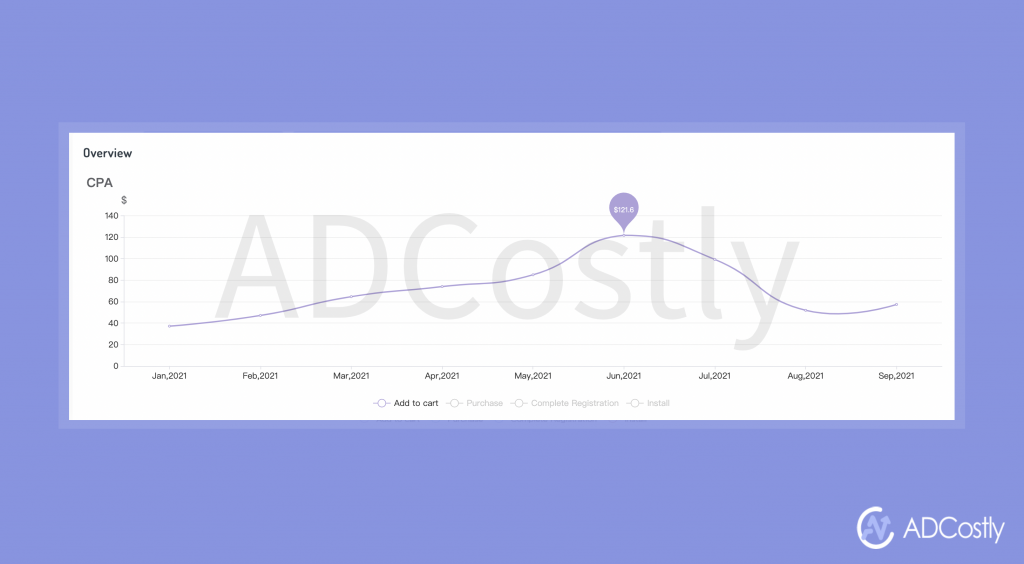
It can be seen that the CPA price of "add to cart" peaked in June 2021 —— $121.6. After querying the data for 2020, the highest price of Add to cart is only $30.11, indicating that the CPA price in 2021 has skyrocketed and that this form of advertising that is unfavorable to the media has been ruthlessly increased.
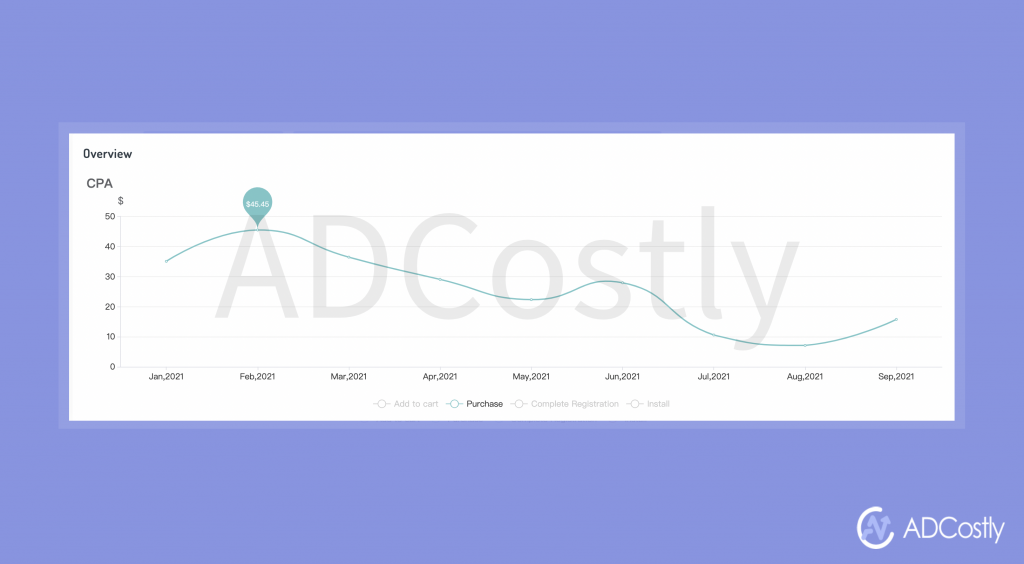
ADCostly showed that the CPA price of "Purchase" peaked in February 2021——$45.45.
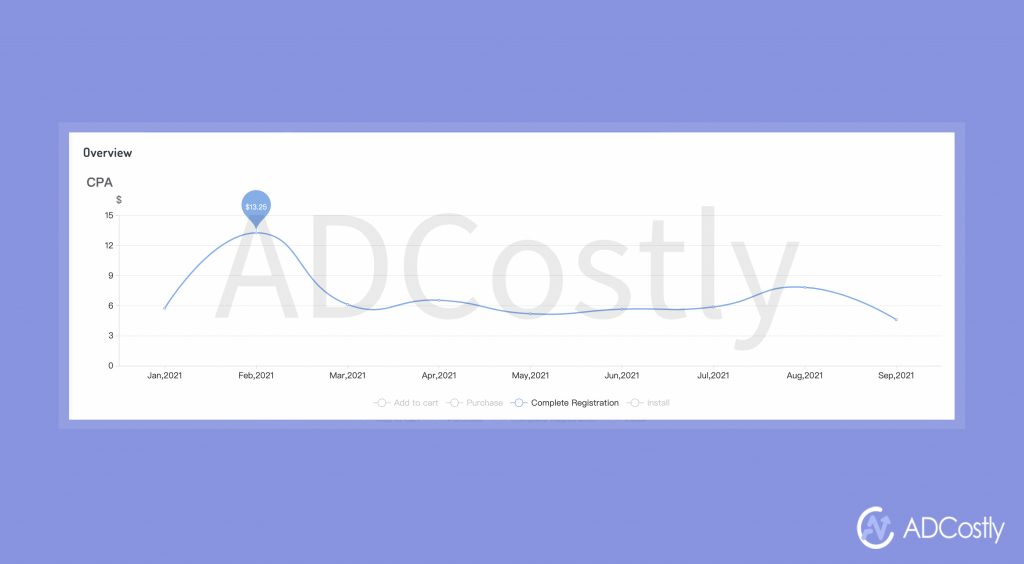
ADCostly showed that the CPA price of "Complete Registration" peaked in February 2021——$13.25.
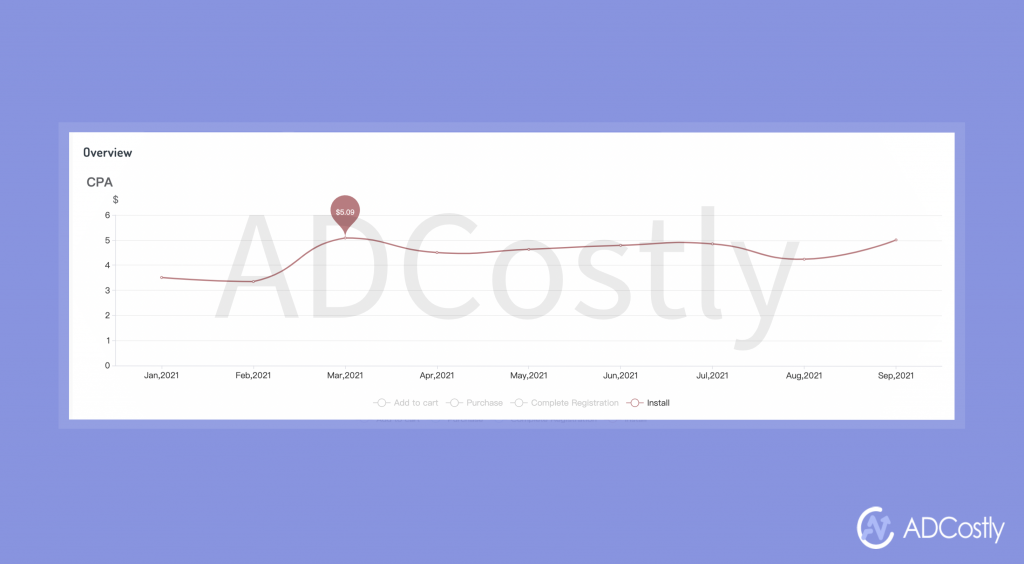
ADCostly shows that the CPA price of "Install" peaked in February 2021——$5.09.
Want to know the cost benchmark of CPA? Click on👉Cost Per Installation – More Downloads for Your App

